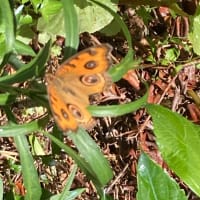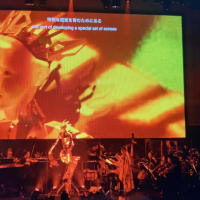Da Vinci's mother was an enslaved teenager trafficked to Italy, new documents suggest (備忘録)
By Ben Turner Published 13 days ago
ダヴィンチの母親はイタリアに人身売買された奴隷のティーンエイジャーでした、新しい文書は示唆しています(自動翻訳なので修正必)
ベン・ターナー公開13日 前
フィレンツェの国立公文書館で見つかった新しい文書のコレクションは、ダヴィンチの母親がコーカサスから誘拐された奴隷の少女であったことを示唆しています。
ミラノのスカラ広場にあるイタリアの彫刻ピエトロマーニによるレオナルドダヴィンチの像。 (画像クレジット:ビクターオビーズアリーナ)
レオナルドダヴィンチの母親は、コーカサスでティーンエイジャーとして誘拐され奴隷にされ、イタリアに送られたと、600年近くの文書の新しい分析が示唆しています。
イタリアの歴史家によって発見された文書は、ダヴィンチの母親であるカテリーナがヴェネツィアに輸送される前に、チェルケシアの黒海によって誘拐され、自宅から引き裂かれたことを示唆しています。
それらが正確であれば、それはイタリアルネサンスの最も偉大な画家および科学者の一人と見なされているレオナルドダヴィンチが半分イタリア人であったことを意味します。文書の発見者であり、ナポリのオリエンターレ大学のイタリア文学の教授であるカルロヴェッチェは、この発見を歴史小説の主題として使用しました。この本は「イル・ソリッソ・ディ・カテリーナ」と呼ばれています。(新しいタブで開きます)」または「レオナルドの母、カテリーナの笑顔」には、彼の研究からの事実上正確な詳細が含まれているとヴェッチェ氏は述べています。しかし、調査結果はまだ査読付きジャーナルに掲載されていません。
関連:科学者たちはダヴィンチのDNAの謎を解いた可能性があります。
「レオナルドの母親はチェルケスの奴隷でした」とベッチェは火曜日(14月<>日)の記者会見で語った。「コーカサス山脈の自宅から連れて行かれ、コンスタンティノープル、次にヴェネツィアで数回売買および転売された後、最終的にフィレンツェに到着し、そこでレオナルドの父親である若い公証人、ピエロダヴィンチに会いました」。
モナリザの絵で最もよく知られているダヴィンチは、芸術家、建築家、発明家、解剖学者、エンジニア、科学者でした。彼は何十もの秘密のノートを科学的観察、発明、解剖学的観察で満たしました。人体解剖学の詳細な図面に加えて、彼のノートには自転車、ヘリコプター、戦車、飛行機のデザインが含まれています。
ダヴィンチの家族歴を研究することは、これまで父親の祖先しか適切に追跡できなかったため、困難です。他の人は、ダヴィンチの母親がピエロダヴィンチに会ったときに遺棄された農家に住んでいた孤児であったと示唆しています。
しかし、有名な博学者の家族についての唯一のしっかりと知られている事実は、彼の両親が結婚しておらず、彼はトスカーナの町アンキアーノで未婚で生まれ、公証人ピエロダヴィンチとカテリーナという名前の女性の息子であったということでした。
ヴェッチェはフィレンツェの州立公文書館で調査を行っているときに、これまで知られていなかった文書を見つけました。その中には、ピエロによって署名され、2年1452月1451日付けのラテン語の証明書があり、カテリーナを奴隷制から解放しました。<>年前の<>年、カテリーナはフィレンツェの騎士に買収されて濡れた看護師として働いた後、ピエロに会ったとヴェッチェは言った。
関連ストーリー—ダヴィンチはアインシュタインの何世紀も前に重力の重要な側面を理解していました、失われたスケッチは明らかにします
—ダヴィンチの「クマの頭」は、今後のオークションで16万ドル以上で販売される可能性があります
—イタリアの警官が盗まれたダヴィンチのレプリカを回収 誰も行方不明だとは知らなかった
「カテリーナを解放した公証人は、彼女がまだ奴隷だったときに彼女を愛し、この子供をもうけたのと同じ人でした」とヴェッチェは言いました。
ヴェッチェは、ピエロが文書を書いている間感情的だったと信じていると付け加え、彼の緊張を裏切る可能性のある小さな間違いを追加しました—他の人の奴隷を妊娠させることは犯罪でした、とヴェッチェは言いました。
「ヴェッチェの再建は非常に説得力があります」とパオロ・ガルッツィ(新しいタブで開きます)、科学史家であり、フィレンツェのガリレオ博物館の名誉会長は、電子メールでライブサイエンスに語った。「確かに、これまでに策定された最も説得力のある再建です。それは新しい元の文書に基づいており、非常に理にかなっています。」
すべての歴史家がこの理論に納得しているわけではありません。マーティン・ケンプ(新しいタブで開きます)、イギリスのオックスフォード大学の美術史の名誉教授(カテリーナは農民の孤児であると示唆した)は、カテリーナは強制的にキリスト教に改宗した奴隷女性の一般名であるため、文書は他の誰かを参照できると述べた。
「カルロ・ヴェッチェは立派な学者です。彼が「架空の」アカウントの文脈で彼の文書を公開したことは驚きです」とケンプは電子メールでライブサイエンスに語った。「私は今でも「田舎の母親」、カテリーナ・ディ・メオを支持しています(ジュゼッペ・パランティと一緒に書いた本を参照)(新しいタブで開きます))—ヴィンチの多かれ少なかれ貧しい孤児ですが、これは彼が「奴隷の母親」を持っていた場合ほど大きな話ではありません。」
*******
ベン・ターナーは、英国を拠点とするライブサイエンスのスタッフライターです。彼は物理学や天文学、技術や気候変動などの他のトピックをカバーしています。ユニバーシティ・カレッジ・ロンドンで素粒子物理学の学位を取得した後、ジャーナリストとして訓練を受けました。執筆していないときは、文学を読んだり、ギターを弾いたり、チェスで恥ずかしい思いをしたりすることを楽しんでいます。
A new collection of documents found in the State Archives of Florence suggests that da Vinci's mother was an enslaved girl kidnapped from the Caucasus.
A statue of Leonardo da Vinci by Italian sculptor Pietro Magni in Milan's Piazza della Scala. (Image credit: Victor Ovies Arenas)
Leonardo da Vinci's mother was kidnapped and enslaved as a teenager in the Caucasus and sent to Italy, a new analysis of nearly 600-year-old documents suggests.
The documents, discovered by an Italian historian, suggest that da Vinci's mother, Caterina, was kidnapped and torn from her home by the Black Sea in Circassia before being shipped to Venice.
If they're accurate, it would mean that Leonardo da Vinci, considered to be one of the greatest painters and scientists of the Italian Renaissance, was only half-Italian. Carlo Vecce, the documents' finder and a professor of Italian literature at the University "L’Orientale" of Naples, has used the discovery as the subject of a historical novel. The book — called "Il Sorriso di Caterina(opens in new tab)," or "The Smile of Caterina, the Mother of Leonardo" — contains factually accurate details from his research, Vecce said. The findings, however, have yet to be published in a peer-reviewed journal.
Related: Scientists may have cracked the mystery of da Vinci's DNA
"Leonardo's mother was a Circassian slave," Vecce said at a news conference on Tuesday (Mar. 14). "Taken from her home in the Caucasus Mountains, sold and resold several times in Constantinople, then Venice, before finally arriving in Florence, where she met a young notary, Piero da Vinci," who was Leonardo's father.
Best known for his painting of the Mona Lisa, da Vinci was an artist, architect, inventor, anatomist, engineer, and scientist. He filled dozens of secret notebooks with scientific observations, inventions, and anatomical observations. Along with detailed drawings of human anatomy, his notebooks contain designs for bicycles, helicopters, tanks, and airplanes.
Researching da Vinci's family history is difficult because until now only his father's ancestry could be properly traced. Others have suggested that da Vinci's mother was an orphan who lived in a derelict farmhouse when she met Piero da Vinci.
But the only firmly known fact about the famous polymath's family was that his parents weren't married and he was born out of wedlock in the Tuscan town of Anchiano, and was the son of the notary Piero da Vinci and a woman named Caterina.
Vecce found the previously unknown documents while conducting research in the State Archives of Florence. Among them is a Latin certificate, signed by Piero and dated Nov. 2, 1452, that freed Caterina from slavery. A year before, in 1451, Caterina had met Piero after being bought by a Florentine knight to work as a wet nurse, Vecce said.
RELATED STORIES—Da Vinci understood key aspects of gravity centuries before Einstein, lost sketches reveal
—Da Vinci's Head of a Bear' could sell for over $16 million at upcoming auction
—Italian cops recover stolen da Vinci replica no one knew was missing
"The notary who freed Caterina was the same person who loved her when she was still a slave and with whom he had this child," Vecce said.
Vecce added that he believes Piero was emotional while writing the document, adding small mistakes that could have betrayed his nervousness — getting another person’s slave pregnant was a crime, Vecce said.
"Vecce's reconstruction is extremely convincing," Paolo Galluzzi(opens in new tab), a historian of science and the honorary president of the Galileo Museum in Florence, told Live Science in an email. "Certainly it is the most convincing reconstruction formulated up to now. It is based on new original documents and makes a lot of sense."
Not all historians are convinced by the theory. Martin Kemp(opens in new tab), an emeritus professor of the History of Art at the University of Oxford in England (who suggested that Caterina was a peasant orphan) said that Caterina was a common name for slave women forcibly converted to Christianity, so the documents could refer to someone else.
"Carlo Vecce is a fine scholar. It is a surprise that he has published his documents in the context of a 'fictionalized' account," Kemp told Live Science via email. "I still favor a 'rural mother' — Caterina di Meo (see the book I wrote with Giuseppe Pallanti(opens in new tab)) — a more or less destitute orphan in Vinci, but this is not as big a story as if he had a 'slave mother.'"
*********
Ben Turner is a U.K.-based staff writer at Live Science. He covers physics and astronomy, among other topics like tech and climate change. He graduated from University College London with a degree in particle physics before training as a journalist. When he's not writing, Ben enjoys reading literature, playing the guitar, and embarrassing himself with chess.
以下、自動翻訳



















